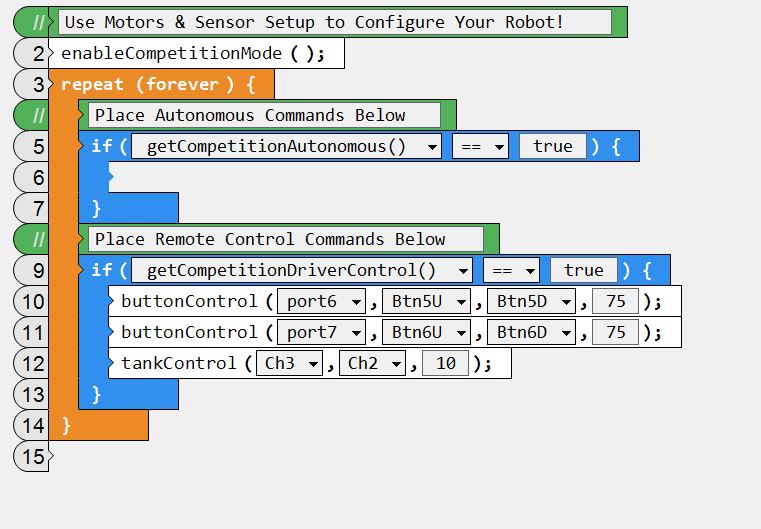

In recent years, we have seen a proliferation of processing devices that collect and manage information from their real-time environments via some physical interface componentamong them, anti-lock brakes, Mars rovers, tele-surgery, articial limbs, and even iPods. Programming for devices that interact with the physical world has always been an area of specialization for individuals that have already run the gauntlet of abstract information-based computer science. Why learn the basics of programming using robots instead of more traditional method? For the last 50 years mainstream computer science has centered on the manipulation of abstract digital information.
#Robotc command list software
The references are stored locally to improve access to the materials and to ensure that they match the version of the software that we are using. Because RobotC is still actively being developed, there are cases in which the documentation does not match the RobotC behavior. The materials are distributed with the software and are copyrighted and unedited. Unless otherwise specied, these external references were all created by the developers of the RobotC software at Carnegie-Mellons Robotics Laboratory.

Throughout these notes the reader is directed to external references.

Thanks to Patricia Alex Robinson for reading this over and helping me to keep it clean.Ĭhapter 1 Introduction1.1 External References This text was initially written by Albert Schueller and supported by a grant from Whitman College, Walla Walla, WA USA. If you distribute this work or a derivative, include the history of the document. To view a copy of this license, visit by-nc-sa/3.0/ or send a letter to Creative Commons, 543 Howard Street, 5th Floor, San Francisco, California, 94105, USA. This work is licensed under the Creative Commons Attribution-NonCommercial-ShareAlike License.


 0 kommentar(er)
0 kommentar(er)
